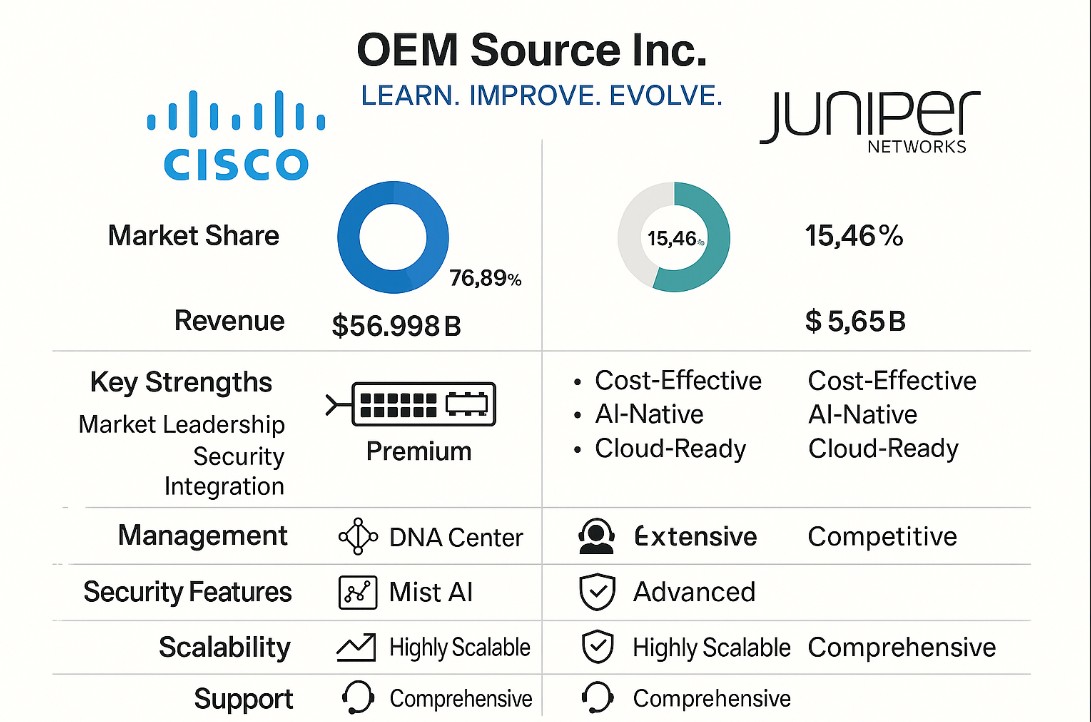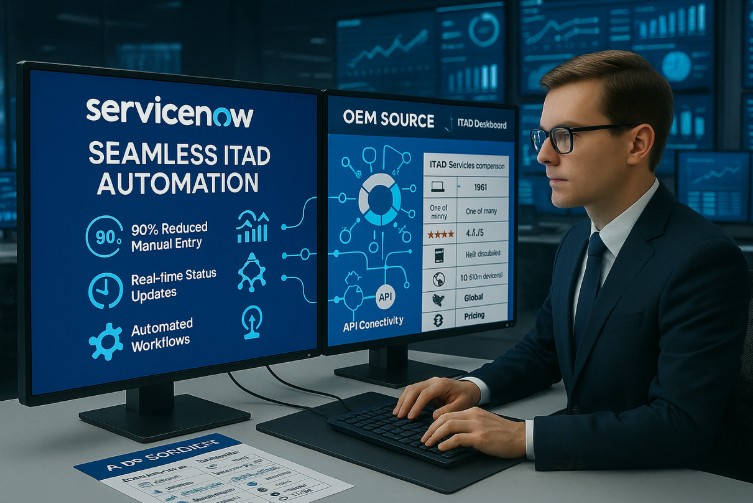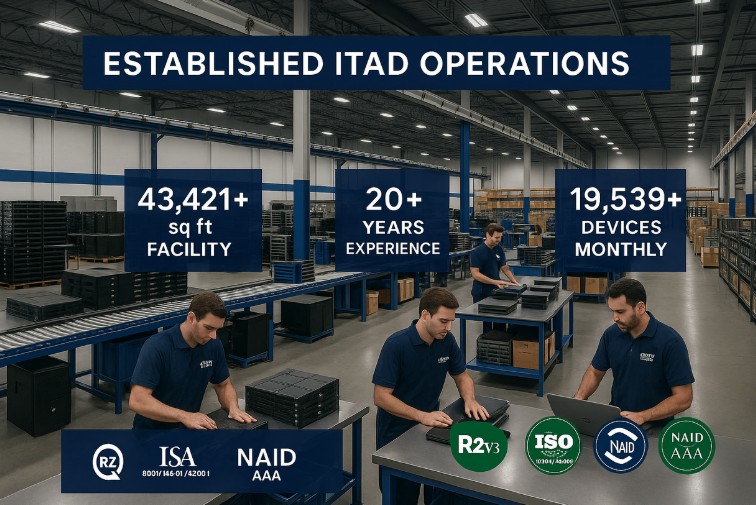Picture this: Your organization’s network infrastructure supports 10,000 employees across multiple locations, handling everything from mission-critical financial transactions to real-time video conferences with global partners. When your current network switches reach end-of-life, the decision between Cisco and Juniper isn’t just about technical specifications—it’s about choosing the foundation that will support your operations for the next decade. With Cisco commanding 76.89% of the computer networking market and Juniper holding a strategic 15.46% share, this choice represents one of the most consequential technology decisions your organization will make.
The enterprise networking landscape has evolved dramatically, with software-defined networking (SDN), AI-driven management, and cloud integration becoming essential requirements rather than optional features. Both Cisco Systems and Juniper Networks offer compelling solutions, but their approaches differ significantly in philosophy, implementation, and long-term value proposition.
Understanding Enterprise Networking Fundamentals
Enterprise network infrastructure serves as the digital backbone of modern organizations, enabling seamless communication, data transfer, and application delivery across complex distributed environments.
What Are Enterprise Network Switches?
Enterprise network switches function as intelligent traffic directors within data centers and corporate networks, managing data flow between connected devices while providing essential services such as VLAN segmentation, quality of service (QoS) management, and security enforcement. Modern switches now incorporate advanced capabilities like:
- Software-defined networking support
- AI-driven analytics
- Cloud management interfaces for centralized oversight and automation
The evolution of enterprise networking has transformed switches from simple connectivity tools into sophisticated platforms that support complex routing operations, threat prevention, and integrated network management.
Key Factors When Choosing Enterprise Switches
Selecting the right enterprise switches requires a comprehensive evaluation of both current and future needs. Key considerations include:
- Performance and Scalability – Throughput capacity, port density, and support for future expansion
- Security Features – Integrated threat detection, access control, and compliance with industry standards
- Management Capabilities – Centralized management, automation support, and real-time monitoring tools
- Integration Requirements – Compatibility with existing infrastructure and third-party platforms
- Cost Considerations – Upfront investment, operational expenses, and total cost of ownership (TCO)
- Vendor Support – Availability of technical support, product documentation, and user communities
Cisco Switches: Strengths and Enterprise Advantages
Cisco Systems has established itself as a dominant force in enterprise networking through decades of innovation, a robust product portfolio, and an extensive global ecosystem.
Market Leadership and Global Ecosystem
Cisco’s sustained market presence reflects both historical leadership and ongoing innovation across networking technologies. Key strengths include:
- Financial Performance – $56.998 billion in annual revenue for 2023, representing a 10.55% year-over-year increase
- Partner Ecosystem – Thousands of certified partners and integration specialists worldwide
- Training Programs – Industry-leading certification and education initiatives
- Industry Expertise – A deep talent pool and strong professional community
- Market Confidence – Continued growth and strong customer trust
- Global Presence – Extensive support infrastructure across multiple regions
Built-In Enterprise-Grade Security Features
Cisco’s approach to network security integrates multi-layered protection directly into the switching infrastructure. Core security capabilities include:
- Zero Trust Support – Identity-based access and microsegmentation
- Integrated Firewalls – Built-in security appliances and threat prevention tools
- AI-Driven Detection – Machine learning for real-time threat identification and response
- Behavioral Analytics – Continuous monitoring for unusual activity and anomaly detection
- Access Control – Robust authentication for users, devices, and endpoints
- Threat Prevention – Proactive defense against evolving cyber attacks
Seamless Integration Across Cisco Products
One of Cisco’s primary advantages is the interoperability and consistency across its full product suite. This unified approach simplifies deployment and ongoing management. Key integration includes:
- Unified Management – Cisco DNA Center for centralized policy enforcement and automation
- Software-Defined Networking – Cisco ACI for end-to-end network orchestration
- Cloud Management – Cisco Meraki for streamlined, cloud-based administration
- End-to-End Portfolio – Routers, switches, wireless access points, and security tools that work together
- Advanced Automation – Policy provisioning, performance optimization, and analytics
- Consistent Interfaces – Standardized UX across platforms for easier training and support
Technical Support and Industry Community
Cisco maintains an extensive technical support infrastructure, including:
- 24/7 assistance
- In-depth product documentation
- Ongoing training programs
- Global community forums with millions of certified professionals
This robust support model ensures customers can resolve issues quickly while benefiting from shared expertise and best practices.
Workforce Availability and Hiring Ease
The widespread adoption of Cisco technologies has created a large pool of qualified networking professionals with Cisco expertise, making it easier for organizations to find skilled personnel for deployment, management, and maintenance activities.
Juniper Switches: Strengths and Enterprise Benefits
Juniper Networks has carved out a strong position in the enterprise networking space by delivering innovative, cost-effective solutions that emphasize operational efficiency and cloud-native flexibility.
Cost-Effective Enterprise Networking Solutions
Juniper’s value proposition focuses on providing enterprise-grade capabilities with competitive pricing and long-term operational savings. Key cost advantages include:
- Competitive Pricing – Lower initial investment compared to premium-market alternatives
- Strong Growth – $5.665 billion in annual revenue for 2023, with 15% year-over-year growth
- OPEX Savings – AI-Native Networking Platform claims up to 85% total OPEX reduction
- Operational Efficiency – Automated tools that reduce manual tasks and configuration overhead
- Reliable Performance – High throughput and resilience across enterprise deployment
- Value Engineering – Optimized hardware and software integration to maximize return on investment (ROI)
Streamlined and Efficient Design Philosophy
Juniper emphasizes clean, efficient architecture that reduces network complexity while delivering high performance. Key design benefits include:
- Performance Optimization – High-performance switching with simplified interfaces
- Reduced Overhead – Minimal maintenance requirements and intuitive controls
- Self-Driving Operations – AI-powered automation that adapts in real-time
- AI-Guided Responses – Intelligent insights for proactive performance tuning
- End-to-End Automation – Workflow automation from provisioning to incident response
- Elegant Architecture – Focused on maximizing reliability without unnecessary complexity
Cloud-Native and Hybrid Deployment Readiness
Juniper is well-positioned for modern cloud-native environments, offering solutions tailored for hybrid and multi-cloud networking. Highlights include:
- Centralized Cloud Management – Unified control for distributed infrastructure
- Flexible Deployments – Designed for both on-premise and cloud-based use cases
- Integration with Modern Tools – APIs and orchestration support for seamless scaling
Junos OS: Unified Management and Automation
At the core of Juniper’s product ecosystem is Junos OS, a consistent, programmable platform that simplifies management and supports advanced automation. Benefits include:
- Unified Operating System – Standardized OS across all Juniper products
- Automation Capabilities – Intent-based orchestration, configuration scripting, and API integration
- Simplified Troubleshooting – Predictable behavior and consistent diagnostics
Robust Security Features Built Into Infrastructure
Juniper integrates advanced security directly into its switching platforms, supporting Zero Trust principles and proactive threat management. Core capabilities include:
- DDoS Protection – Real-time mitigation of volumetric attacks
- Advanced Threat Detection – AI-driven identification of anomalies and malicious behavior
- Access Controls – Role-based access and identity verification tools
- Secure Architecture – Embedded security across all layers of the networking stack
Comparing Technology and Performance: Cisco vs. Juniper
The technological strategies of Cisco and Juniper reflect distinct philosophies around network design, management, and operational efficiency. Understanding these differences is essential when evaluating long-term infrastructure investments.
Software-Defined Networking Innovations
Both Cisco and Juniper have made significant strides in software-defined networking (SDN), but their execution differs in structure and flexibility.
- Cisco’s SDN Strategy – DNA Center and Application Centric Infrastructure (ACI) provide centralized orchestration and policy management across the entire network
- Juniper’s SDN Approach – Contrail Networking and cloud-native designs support agile DevOps workflows and modern application deployment
- Integration Philosophy – Cisco focuses on unified ecosystem control; Juniper emphasizes open standards and API-driven flexibility
- Deployment Models – Cisco enables centralized infrastructure oversight, while Juniper supports modular, third-party integrations
- Management Paradigms – Cisco prioritizes centralized orchestration, whereas Juniper leans on distributed intelligence and automation
AI-Powered Network Management Capabilities
Artificial intelligence and machine learning play a transformative role in proactive networking management. Key capabilities include:
- Cisco AI Initiatives – Predictive analytics, root cause identification, and performance tuning tools built into DNA Center
- Machine Learning Integration – Both vendors utilize ML to detect anomalies, optimize performance, and predict failures
- Juniper Mist AI Platform – End-to-end network analytics, automated troubleshooting, and self-healing operations
- Proactive Problem Resolution – AI identifies and resolves network issues before they impact users
- Operational Efficiency – Juniper reports up to 90% reduction in support tickets via AI-driven automation
- Performance Intelligence – Continuous monitoring helps ensure optimal uptime and service delivery
Scalability and Long-Term Network Flexibility
Both Cisco and Juniper address scalability, but they emphasize different operational models:
- Cisco’s Scalability Strategy – Modular architectures and expansive product lines support phased growth and standardized network control
- Juniper’s Scalability Efficiency – Automation-first design helps manage growing infrastructure without proportionate increases in IT headcount
Total Cost of Ownership: Investment vs. Operational Savings
Financial analysis plays a crucial role in networking technology selection, as organizations must balance initial investment costs with long-term operational expenses.
Initial Investment Analysis
- Cisco – Higher upfront cost due to comprehensive features, bundled software, and brand premium.
- Juniper – Lower capital investment with competitive features that meet enterprise requirements.
Ongoing Maintenance and Support
- Cisco – Support costs may include SMARTnet contracts, software upgrades, and training for proprietary systems
- Juniper – Promotes lower operational expenditures through automation, simplified management, and open system flexibility
Evaluating Security Paradigms: Cisco vs. Juniper
Network security is a critical consideration in enterprise switch selection, as networking infrastructure provides the foundation for comprehensive security architectures.
Security Protocols in Cisco Switches
Cisco integrates robust, multi-layered security directly into its switching infrastructure. Key features include:
- Zero Trust Architecture – Comprehensive identity verification and role-based access control
- Integrated Threat Prevention – Real-time detection and automated threat response
- Network Segmentation – Advanced VLAN and micro-segmentation to isolate sensitive data
- Compliance Support – Built-in features for regulatory compliance requirements
- Security Analytics – AI-driven threat monitoring and behavior-based anomaly detection
Security Features in Juniper Switches
Juniper’s security model emphasizes intelligent threat detection and seamless integration with cloud-native platforms. Its capabilities include:
- AI-Driven Threat Response – Machine learning algorithms identify and neutralize emerging threats
- Automated Security Actions – Real-time remediation through Mist AI and Juniper security services
- Visibility and Control – Deep telemetry for comprehensive network awareness
- Cloud Security Integration – Compatibility with leading cloud providers and security platforms
Integration and Compatibility: Legacy and Cloud Systems
The ability to integrate networking solutions with existing infrastructure significantly impacts deployment success and long-term operational effectiveness.
Cisco: Strong Legacy Integration
Cisco’s extensive product portfolio and long market presence mean that many organizations already have significant Cisco infrastructure investments. The Cisco ecosystem’s breadth enables comprehensive integration scenarios that span networking, security, and data center technologies.
Juniper: Open Standards and Flexibility
Juniper’s approach emphasizes open standards and API-driven integration that enables flexible connectivity with diverse third-party solutions. This openness provides advantages for organizations with heterogeneous environments or specific integration requirements.
Sustainability and Environmental Impact
Environmental considerations increasingly influence technology purchasing decisions as organizations seek to reduce their carbon footprint.
Cisco’s Sustainability Commitments
Cisco has invested in energy-efficient designs and sustainable manufacturing practices that reduce environmental impact while lowering operational costs. The company’s environmental initiatives include energy-efficient hardware designs and comprehensive recycling programs.
Juniper’s Green Engineering Approach
Juniper’s environmental approach emphasizes operational efficiency and reduced power consumption through intelligent design and AI-driven optimization. The streamlined design philosophy often results in more efficient power utilization.
Making the Decision: Cisco or Juniper?
The choice between Cisco and Juniper networking solutions requires thoughtful evaluation of technical requirements, budget constraints, and long-term strategic goals.
Tailoring Choices to Business Needs
Organizations must align network infrastructure investments with internal capabilities and operational needs. Key decision factors include:
- Existing Infrastructure – Compatibility with current systems and integration requirements
- Staff Expertise – Availability of trained personnel or need for reskilling
- Budget Constraints – Cost considerations across procurement and operations
- Growth Plans – Scalability to support future expansion
- Security Requirements – Compliance and threat protection needs
Long-Term Network Planning
Networking decisions have lasting implications for security posture, operational agility, and lifecycle management. Evaluating vendor roadmaps, support longevity, and future integration potential is essential for maximizing return on investment.
Weighing Technical Differences
Cisco and Juniper represent two distinct philosophies in enterprise networking. Cisco offers extensive ecosystem integration and unified management, while Juniper emphasizes operational efficiency and AI-driven automation, and open-standards flexibility.
OEM Source helps enterprises navigate these decisions with lifecycle-aligned services—from switch procurement and deployment to end-of-life strategies. Our Refurbishment & Redeployment solutions extend the life of existing equipment, while our Corporate IT Asset Disposition services ensure secure, compliant, and environmentally responsible transitions
Frequently Asked Questions
What is the difference between Cisco and Juniper networks?
Cisco and Juniper differ in both market positioning and technology philosophy. Cisco leads with 76.89% market share and offers tightly integrated solutions across a broad product portfolio. Juniper, with a 15.46% share, focuses on operational efficiency, AI-driven automation, and open standards for flexible integration..
Is Juniper or Cisco more expensive?
Cisco products generally carry a higher upfront cost due to their market dominance and ecosystem integration. Juniper offers lower initial pricing and emphasizes total cost-of-ownership savings, claiming up to 85% OPEX reduction through automation and AI-native operations.
What is the difference between SDN Juniper and Cisco?
Cisco’s SDN approach centers on DNA Center and ACI, providing comprehensive orchestration across integrated Cisco infrastructure. Juniper’s SDN strategy emphasizes Contrail Networking and cloud-native architectures with open standards and API-driven management for flexible third-party integration.
Which is better for cloud-native networking: Cisco or Juniper?
Juniper is often favored in cloud-native and DevOps environments due to its open architecture and AI-driven automation. Cisco excels in hybrid environments where unified management and tight integration across hardware and software are key priorities.
How do Cisco and Juniper compare in terms of security features?
Both vendors offer robust security features. Cisco integrates zero-trust architecture, AI-driven threat detection, and advanced segmentation directly into its switching infrastructure. Juniper also supports zero trust with strong AI-based threat detection, automated responses, and advanced network visibility.





